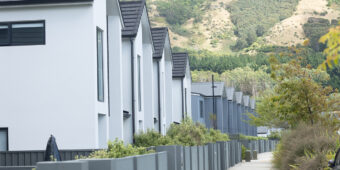Lessons from latest board decision
25 Jan 2024, LBP & Regulation, Learn, Prove Your Know How

The Building Practitioners Board recently concluded an investigation, which demonstrated the limitations of clause 3A of Schedule 1 of the Building Act
The Board’s investigation looked at whether a building consent should have been obtained for a salon to be constructed at the complainant’s address before building work was carried out. This required the Board to determine whether an exemption under clause 3A of Schedule 1 applied, specifically an exemption for certain standalone buildings up to 30sqm.
The respondent knew that a business was to be conducted from the salon but believed that a building consent was not required because it was an outbuilding between 10 and 30sqm being constructed by a Licensed Building Practitioner (LBP) and came within the provisions of clause 3A of Schedule 1.
Section 40 Building Act 2004
Section 40 requires that all building work must be carried out in accordance with a building consent. The process of issuing a building consent and the subsequent inspections under it ensure independent verification that the works meet the performance requirements of the Building Code. In doing so, the building consent process provides protection for owners of works, and the public.
There are limited exceptions to this requirement, one of which is building work described in Schedule 1 of the Building Act.
Schedule 1, Building Act
Schedule 1 of the Building Act includes a list of building work which is exempted from requiring a building consent. The exception being relied on in this instance was clause 3A.
This clause allows for a detached building exceeding 10sqm but not exceeding 30sqm in floor area and constructed of lightweight building products to be built without a building consent, with some limitations. These limitations include certain requirements in relation to building height and height in relation to a boundary or to another residential building. It is also not allowed to contain sanitary or cooking facilities or facilities for the storage of potable water and cannot include sleeping accommodation unless the building is used in connection with a dwelling. If it is used for sleeping, it must have smoke alarms installed.
The Board investigation
Each element of an exemption must be satisfied for it to apply to the building work. In this case the height, area, and products used were satisfied, and the sleeping accommodation and smoke alarm issues were not relevant as the intended use was a salon.
That left clause 3A (1)(d) – does not contain sanitary facilities or facilities for the storage of potable water. The salon included sanitary facilities, and the respondent was aware of this – his quote included the supply of a shower base, a vanity and a kitchenette unit.
The Council issued a Notice to Fix recording that as a bathroom, along with the associated plumbing and drainage works had been installed, a building consent was necessary. On this basis, the exemption was not available.
The Council also noted in the Notice to Fix that the building was closer than the measure of its own height to the existing residential building (clause 3A (2)). Again, this means that the exemption was not available.
Finally, correspondence from the Council noted that because members of the public would be using the building if it was a salon, under s363 of the Building Act, a building consent was necessary
The respondent’s response
The respondent stated that because he was not going to carry out the plumbing work, he did not have to make sure a building consent was in place before the building work was carried out. In essence, his defence was that a building consent would have to be obtained when plumbing work was carried out.
The finding of the Board
If the respondent’s view was correct, then some form of retrospective building consent would have to be granted for the work that had already been completed. The Building Act does not provide for retrospective building consents. Rather, it provisions for Certificates of Acceptance, which are an alternative to a Code Compliance Certificate, and which note unconsented work without providing an assurance that the building work meets Building Code requirements.
The Board does not accept that an LBP can segment the whole of an intended build and form the view that, if they do some, but not all the work, they need not ensure a building consent is in place.
Further, the Board considers that an LBP should know of and correctly apply the exemptions in Schedule 1, or if there is any doubt, at least seek further professional advice or a written acknowledgment from a Building Consent Authority that an exemption does apply.
This article is an excerpt from Codewords Issue 116 and has been published verbatim. As such, neither PlaceMakers nor Under Construction magazine’s publishers take responsibility for the accuracy of the article or its corresponding questions.
Reading Codewords articles that are relevant to your licence class is a mandatory requirement for Licensed Building Practitioners. These questions can be answered through the LBP portal, online on the Under Construction website or recorded on the magazine, then provided at the time of renewal.
Register to earn LBP Points Sign in
7 Comments
Leave a Reply
You must be logged in to post a comment.




good
Thanks
cool
Useful information.
Done
Cool
Good